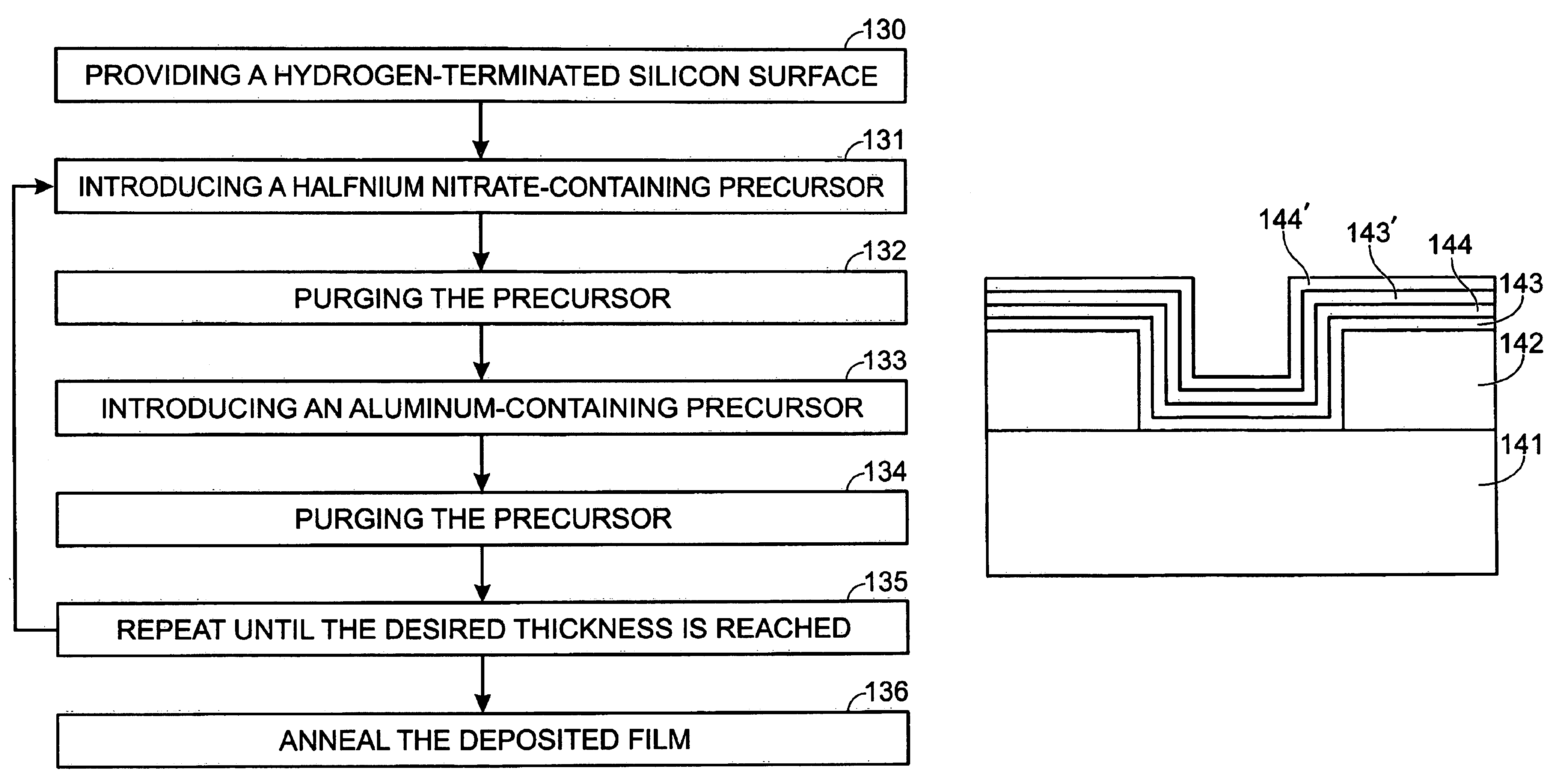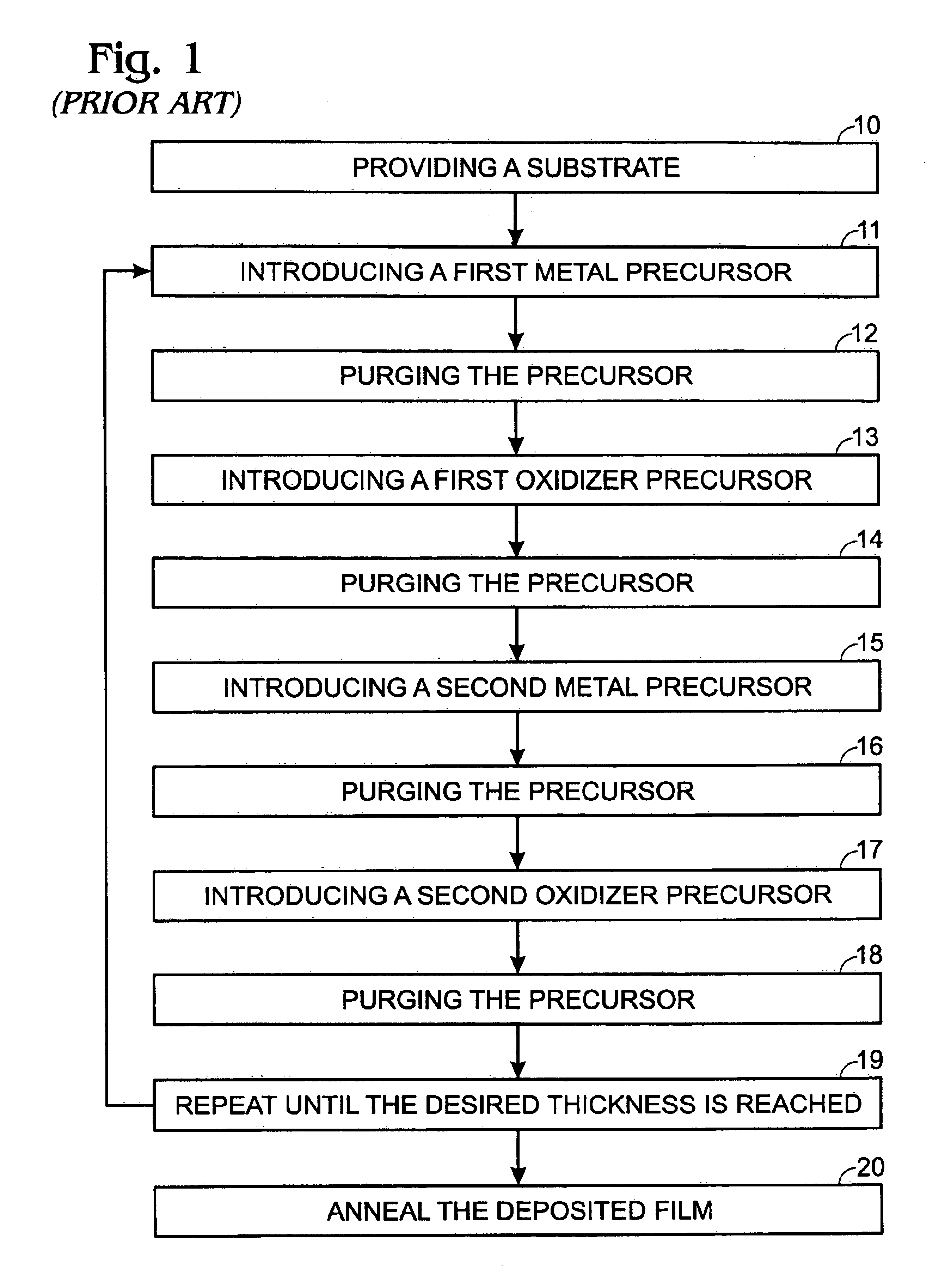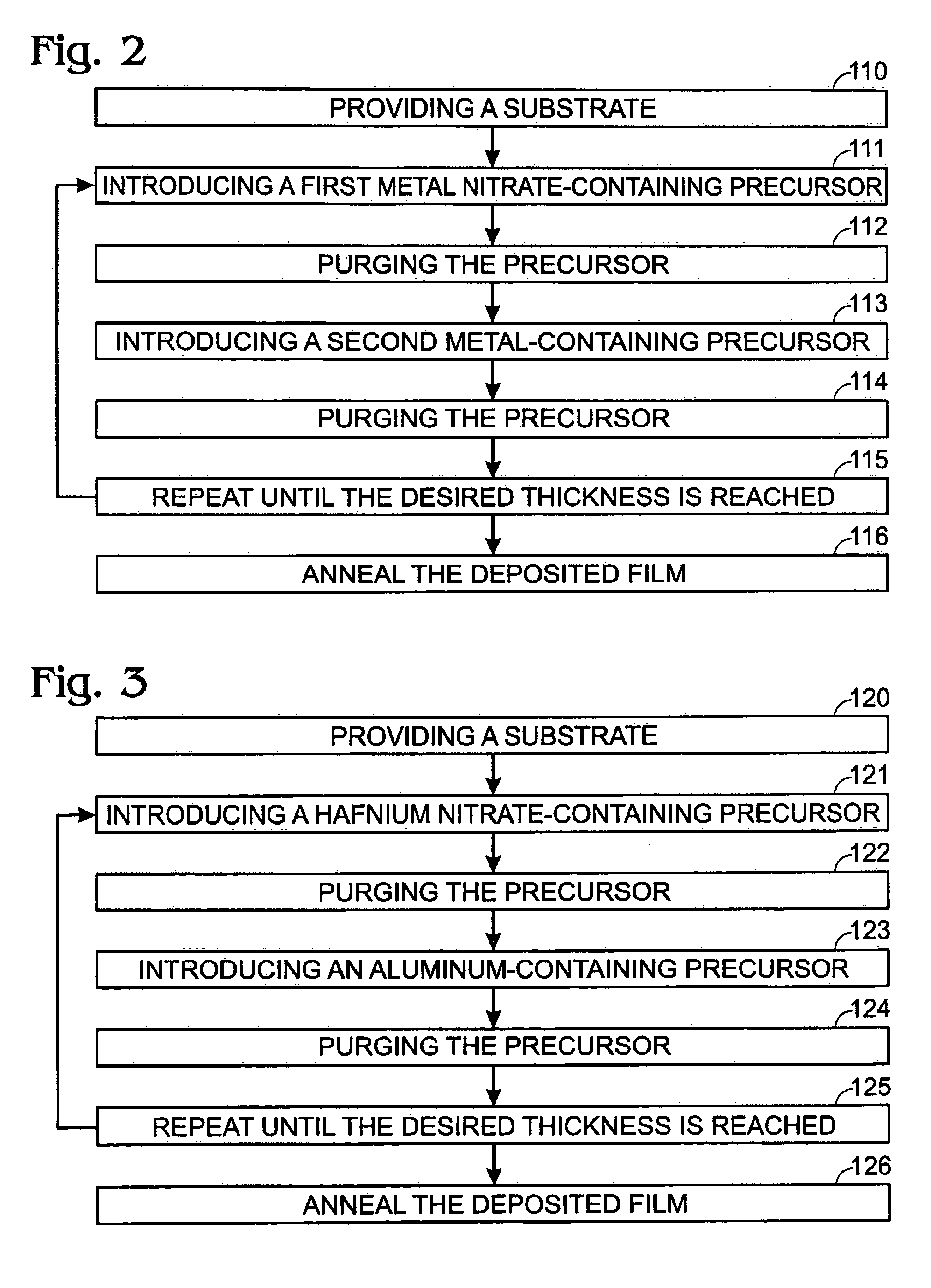Method for depositing a nanolaminate film by atomic layer deposition
a nanolaminate film and atomic layer deposition technology, applied in chemical vapor deposition coatings, coatings, transistors, etc., can solve the problems of inability to use gate dielectrics in fet devices, inability to find suitable replacements, and inability to deposit thin silicon dioxide interfacial layers, etc., to achieve the effect of reducing water conten
- Summary
- Abstract
- Description
- Claims
- Application Information
AI Technical Summary
Benefits of technology
Problems solved by technology
Method used
Image
Examples
Embodiment Construction
[0053]FIG. 1 shows a flowchart of a prior art process showing the steps of depositing an oxide nanolaminate thin film. Step 10 provides a substrate within a process chamber. The substrate and the chamber are conditioned for the deposition process such as the growing of an oxide interface layer (step 10a). Steps 11 to 14 provide the first metal oxide of the two-oxide nanolaminate thin film. Step 11 provides a first metal precursor for an adsorption of the precursor onto the substrate such as hafnium chloride (HfCl4). Step 12 provides a purging step to remove the precursor from the process chamber with an inactive gas such as nitrogen. Step 13 provides a first oxidizer such as water, alcohol, oxygen, or ozone to the process chamber. The oxidizer reacts with the adsorbed first metal precursor to form a first metal oxide such as hafnium oxide. Step 14 provides a purging step with nitrogen to remove the oxidizer and any by-products. Then the second metal oxide of the two-oxide nanolamina...
PUM
| Property | Measurement | Unit |
|---|---|---|
| dielectric constant | aaaaa | aaaaa |
| thickness | aaaaa | aaaaa |
| thickness | aaaaa | aaaaa |
Abstract
Description
Claims
Application Information
 Login to View More
Login to View More - R&D
- Intellectual Property
- Life Sciences
- Materials
- Tech Scout
- Unparalleled Data Quality
- Higher Quality Content
- 60% Fewer Hallucinations
Browse by: Latest US Patents, China's latest patents, Technical Efficacy Thesaurus, Application Domain, Technology Topic, Popular Technical Reports.
© 2025 PatSnap. All rights reserved.Legal|Privacy policy|Modern Slavery Act Transparency Statement|Sitemap|About US| Contact US: help@patsnap.com



